Have you ever thought about what quietly brings you joy? For me, it’s cleaning. Not the kind that’s rushed or forced, but the kind that brings a strange sense of order and calm—wiping down a dusty shelf, arranging scattered things just right. It’s soothing, almost meditative. And lately, it’s made me think of creatures who do that job for nature, without any applause or recognition: vultures.These often-misunderstood birds are nature’s housekeepers. They don’t hunt or kill. They clean. They remove the dead before disease spreads, quietly restoring balance.

Now, posted in Uttarkashi, things feel a bit different. All nine species of vultures found in India are present in Uttarakhand, and the Himalayan Griffon is one of the more commonly seen ones in the Himalayan region. I’ve spotted them soaring overhead quite a few times.But there’s one moment I still remember clearly—when I saw them not just flying, but feeding and going about their lives. It was in Govind Wildlife Sanctuary. A cow carcass lay by the roadside, and a group of massive vultures had gathered around it. By the time I reached, they had almost finished their meal and were slowly walking along the side of the road. I couldn’t get a proper photo of them in a group around the carcass, but just watching them up close—huge, powerful, and completely absorbed in what they were doing—was an unforgettable experience.
Himalayan griffon is no stranger to the high Himalayas. It thrives between 1,200 to 5,500 meters but sometimes descends lower in search of food. They soar effortlessly across valleys, scanning the landscape for death—and life.
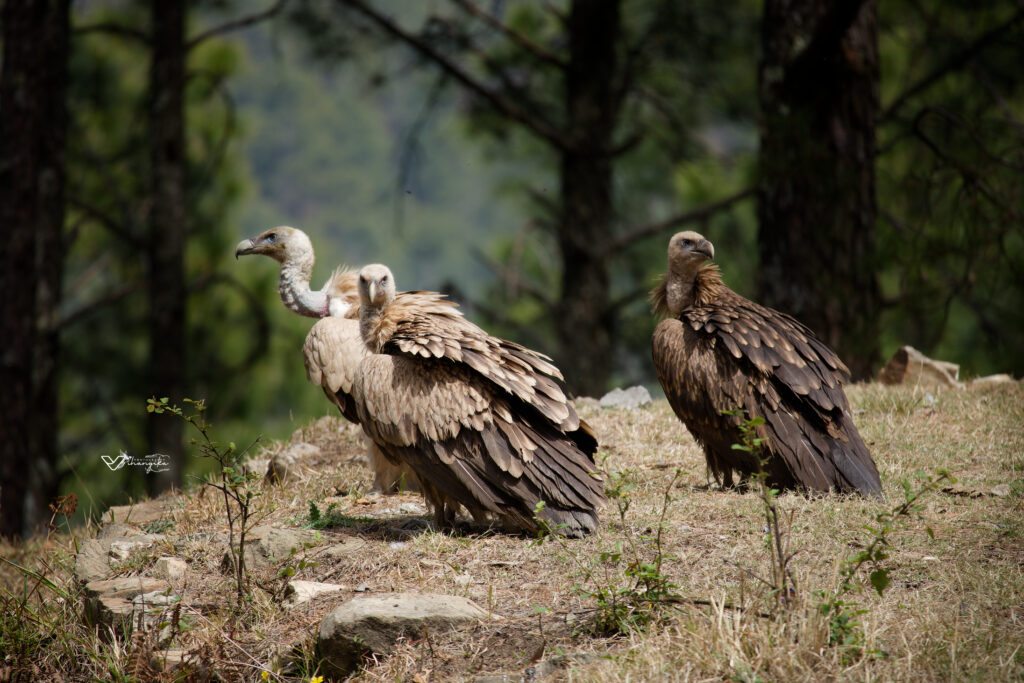
As I stood there watching them walking on the road side, I was struck by just how enormous these birds really are. From far below, when they soar high in the sky, they look small and distant, but up close, their massive wingspan and powerful bodies are truly breathtaking. They moved confidently around the carcass, feeding together like a well-organized team, each aware of the others but utterly focused on their task. There was a quiet pride in the way they stood—heads held high, feathers slightly ruffled by the mountain breeze—as if they owned this rugged patch of the valley. Their presence was commanding and regal, a reminder that these silent cleaners rule their world with quiet strength and purpose.
But what’s fascinating is that not all vultures are the same. In fact, vultures around the world are divided into two broad groups: Old World and New World. The Old World vultures—like our Himalayan Griffon—rely almost entirely on their sharp eyesight to find food. In contrast, New World vultures (which aren’t found in India), like the Turkey Vulture in the Americas, have an incredible sense of smell—something quite rare among birds—and can detect the scent of decay from over two kilometers away. Old World vultures, on the other hand, often follow carnivores or other scavengers like eagles and foxes to spot potential meals. It’s a clever system—they let others do the hunting or locating, and then swoop in to clean up.
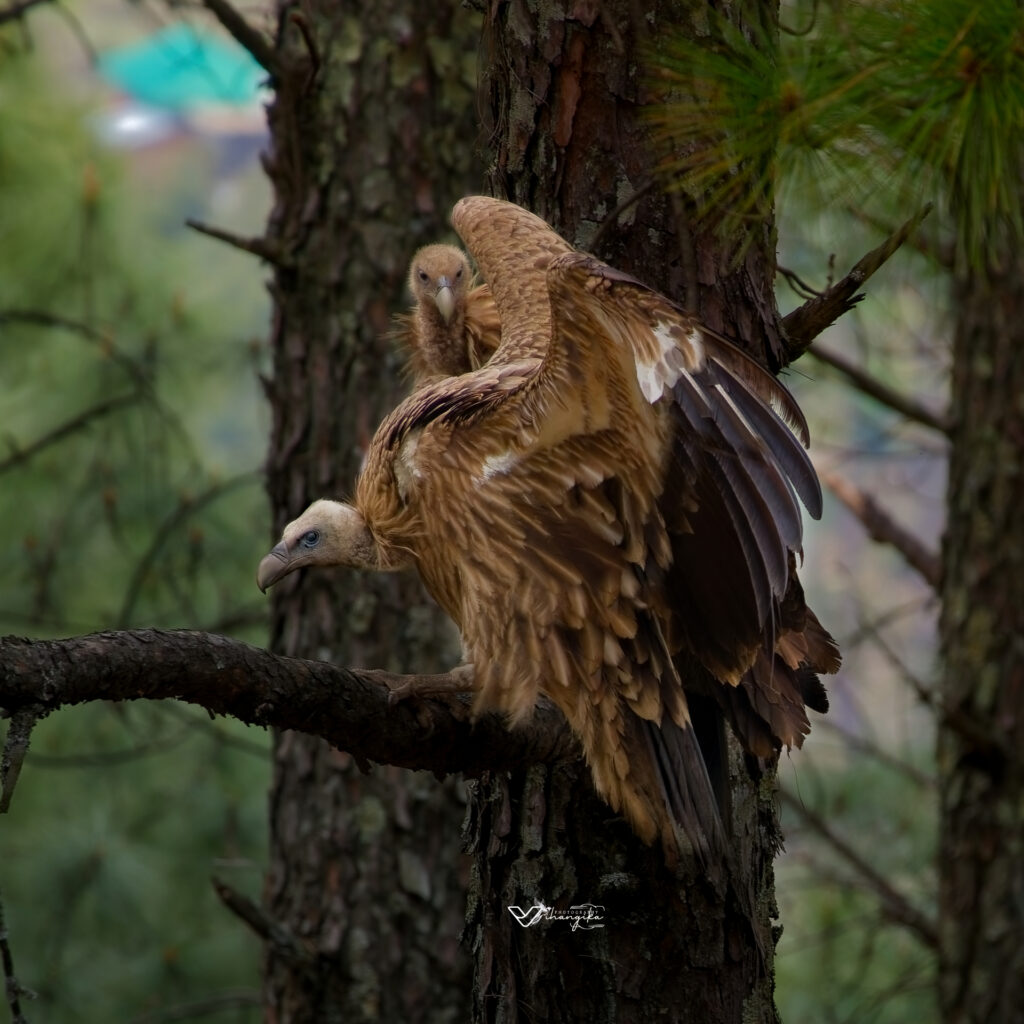
There’s also another way vultures are classified—by how they eat. Some are gulpers, others rippers, and some are scrappers. The Himalayan Griffon is a classic gulper. With its long, bald neck and slender skull, it can reach deep into carcasses and gulp down soft tissues with ease. Rippers, by contrast, have powerful beaks and wide skulls to tear through tougher tissue. Scrappers, the most delicate, simply peck at what’s left behind. This feeding style isn’t random—it’s written in their anatomy of skull.
And now that we’re on the subject of features that exist for a reason, let’s talk about that bald head and hairless neck. They may look a little strange—almost unsettling at first—but they serve a very practical purpose. When vultures push their heads deep inside carcasses, feathers would only trap blood, bacteria, and decay. Bare skin helps keep them clean and reduces the risk of infection.
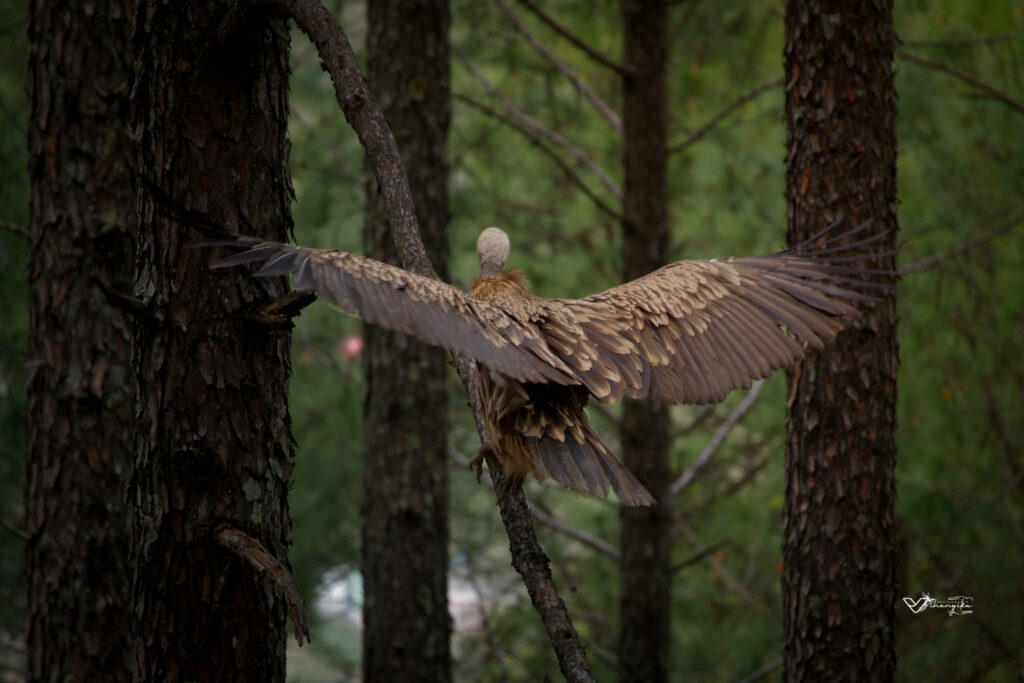
Paired with their massive wingspan—ranging from 2.5 to 3 meters—these vultures are built for silent, effortless flight. But that day, as I stood watching them walk slowly along the roadside, the silence was suddenly broken. As they took off toward the pine woods, a deep, heavy sound filled the air—the powerful flapping of their wings. It wasn’t just a noise—it was the sound of strength. In the stillness of the forest, that slow, deliberate beat of air made their presence impossible to ignore. You could feel the size of the bird in every push of its wings. It was so wild and raw.
And what claws they have—long toes with blunt talons. Unlike eagles, vultures don’t use their feet to kill. Their feet are for walking, gripping rocks, and anchoring themselves while feeding. But even as one walked across the rocky roadside in front of me, it looked anything but weak. It moved with the grace of a monarch, its head high, its body built not for attack but for endurance.
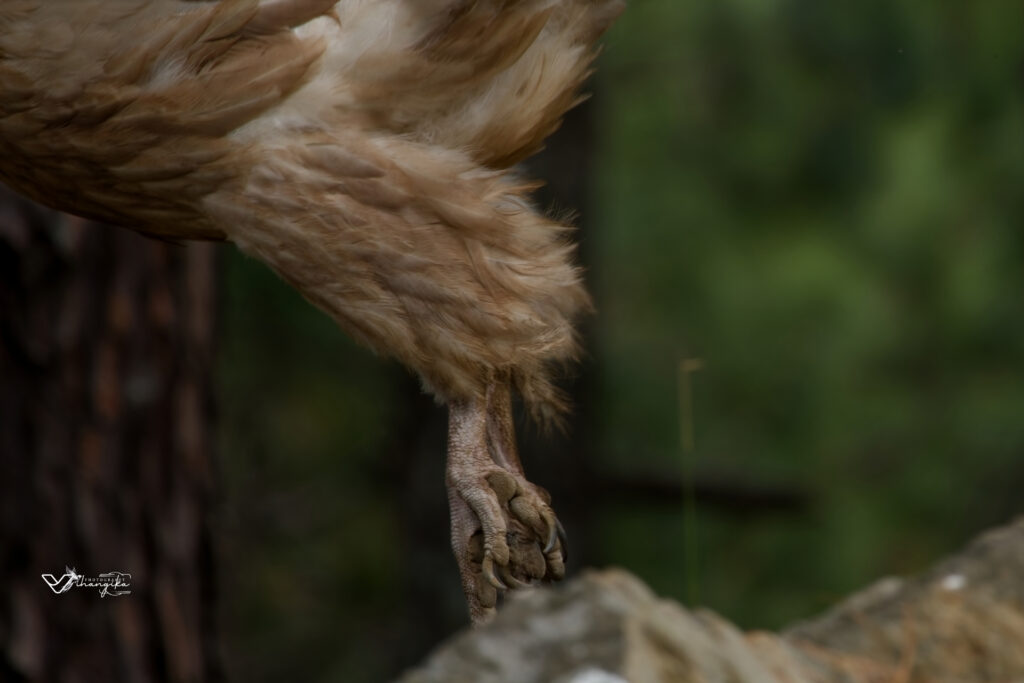
The Himalayan Griffon Vulture, Gyps himalayensis, is known for having a purplish-pink patch of bare skin at the base of its neck. This patch is a natural characteristic of the species.From February to April, these vultures begin nesting. High up on cliffs, they build large nests using twigs, bones, even bits of glass or plastic. A single egg is laid, and the chick takes months to fledge. It’s a slow, careful investment—just like everything about these birds.
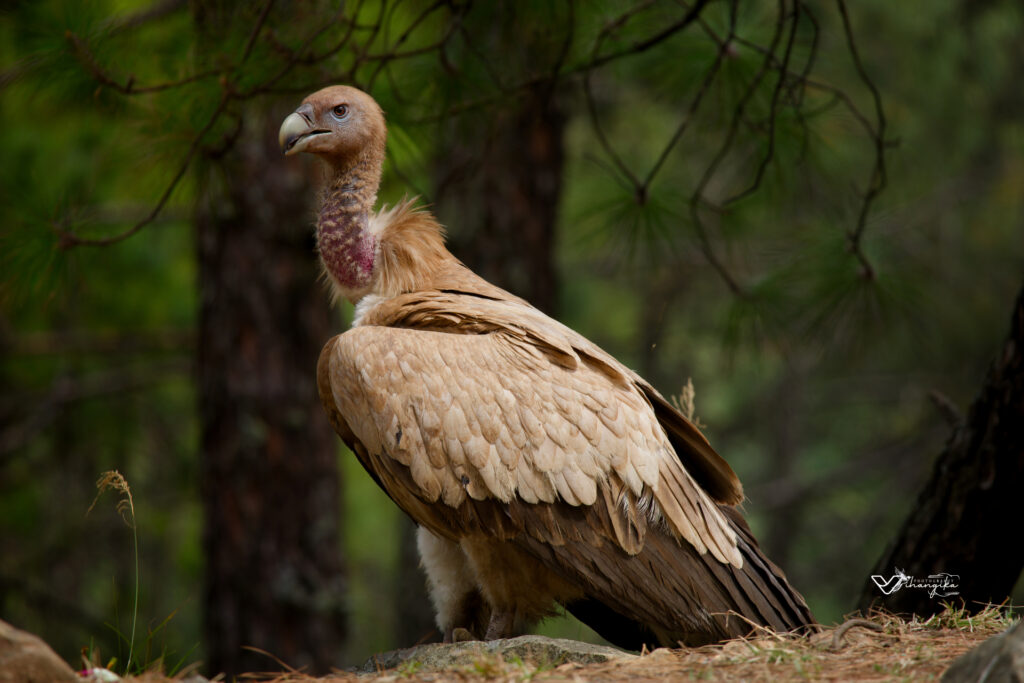
We often overlook vultures, dismissing them as grim or grotesque. But to witness them up close is to see a part of the natural world we desperately need—one that does the dirty work for us, quietly, thoroughly, and with awe-inspiring elegance.
The Himalayan Griffon (Gyps himalayensis) may not be rare here, and its IUCN status is currently Least Concern, but its presence is no less important. In a world where so much depends on balance, vultures are the invisible line between life and rot.
So next time you see one soaring above the mountains—or grounded by a roadside—pause. Look again. You might just be witnessing one of the greatest unsung heroes of our wild places.
About the Himalayan Griffon (Gyps himalayensis):
- Family: Accipitridae
- IUCN Status: Near Threatened
- Size: 103–110 cm length
- Wingspan: 260–290 cm
- Weight: 8,000–12,000 g
- Habitat: Mountainous regions, gorges, and high-altitude steppes between 1,200 and 5,500 meters, descending to 900 meters in winter
- Distribution: Resident of the Himalayas, occasional visitor to northern plains
- Food Habits: Exclusively carrion feeder, dominant at carcasses except in presence of Cinereous Vulture
- Breeding Season: February to April, nesting on cliffs with sticks, bones, feathers, and sometimes debris
- Etymology: “Gyps” is Greek for vulture; “himalayensis” means from the Himalayas
